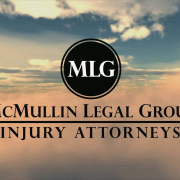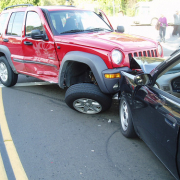5 Things Every Driver Should Know About Car Insurance
5 THINGS EVERY UTAH DRIVER SHOULD KNOW ABOUT CAR INSURANCE
SAINT GEORGE INJURY LAWYER EXPLAINS WHAT YOU SHOULD KNOW ABOUT AUTO INSURANCE
Auto insurance can be a pretty tricky thing because everyone has to have it and most people don’ t know that much about it. Typically, when you ask people what kind of coverage they have on their car, they often respond with, “Oh, I have full coverage.” They seem to think that full coverage means that their insurance will pay 100% no matter what happens with anything related to an accident in their car. This seems to be the impression that some people are under. This is simply not true. Any auto insurance policy is going to have completely separate lines of coverage. What those are, is separate contract language that applies to a given situation that will trigger the application of one of those contracts. This article will explain each separate line of coverage and what it covers.
#1 Comprehensive and Collision Coverage
The first line we will discuss is the coverage of property. There is collision coverage and comprehensive coverage. This is for damage to your own property. Collision coverage is used when your car is damaged by another vehicle. When you have collision coverage on your car, it doesn’t matter who is at fault in the accident to use that benefit. You can go through your own insurance whether someone hits you or you hit someone else. There will likely be a deductible that applies with the most common being $500. However, the deductible could range from no deductible to several thousand depending on what you choose. If you do use your own collision coverage to pay for the damages on your auto and the other driver is found to be at-fault, their insurance will reimburse your insurance company those expenses.
Comprehensive coverage is very similar in that it doesn’t matter who is at fault and it covers the damage done to your own vehicle. This covers all of the other hazards that could happen to your car other than a collision with another car. An example might be a tree falling on your car, or vandalism of your car or a fire. This is also the line of coverage that covers when a rock hits your windshield. There is usually a deductible on this coverage also.
#2 PIP Coverage
The second type of coverage that we have in the state of Utah is PIP. This stands for Personal Injury Protection. It is a special form of med pay coverage. Med pay coverage is a line of coverage for medical payments for yourself. So if you get hurt in a car accident, your med pay would be the first policy to come in and pay for your medical bills. So they would pay for your ambulance ride or your emergency room visit, or visits to your chiropractor and so on. Your own insurance would cover the bill.
In the short term, some people will say, “Well, why would my insurance cover that bill? The accident wasn’t my fault. The other guy ran a red light. Why is my insurance paying anything?” This answer to that is that in Utah we have a PIP law, a statute, that says that every single auto insurance policy sold to an individual in the state of Utah, must have a minimum of $3,000 in PIP coverage. Everyone must have at least this much. There are also other coverages that you must have unless you sign a waiver to get out of them. Your PIP coverage also includes service that you may need if you are seriously injured in a automobile accident such as household services. Let’s say you were injured and you were laid up, you unable do your own dishes, you can’t raise your arms up above your head, or mow your own lawn. You need someone to come by and help you manage those things. PIP coverage requires a minimum of $20 a day to be available to you to pay for those types of services. This coverage will pay to have someone come in and help you take care of your house while you are recovering. PIP coverage also includes some wage loss. So the $3,000 in medical coverage, plus the household services, plus the wage loss in part of the PIP coverage. The loss of wages will be either $250 per week or 85% of your normal weekly wage whichever is lower. The insurance company can pay you the lowest of the two. Those figures are minimums. You may be thinking that you make a lot more than that and that’s not going to cover you. No, it’s not, but it is something to help tide you over and ease the pain short term until you can make a claim for lost wages against a bodily injury liability policy that may apply on the at-fault driver’s insurance.
We have this PIP requirement in place in Utah for a couple of reasons. This PIP coverage can be both good and bad for Utah drivers, mostly good. If you get hurt in a crash, you don’t have to wonder who was at fault, was it him or was it me, when deciding to seek medical treatment. You don’t have to ask yourself those questions before getting medical attention in Utah because your PIP will pay for your treatment automatically whether you are at fault or not and that is a very good thing. We value people being able to get medical care even if they can’t afford it. Nobody is expecting to be involved in a car accident and they shouldn’t have to think about how they will pay for medical care for an accident that they didn’t cause. One of the tradeoffs to PIP coverage is that if you don’t reach the minimum threshold of $3,000 in medical expenses claimed on your PIP portion of your policy, you are actually precluded from making a claim against the at-fault driver’s liability policy. So, if you are a car accident victim and you get hurt and go to the emergency room for treatment and you have minor injuries such as bruises and stitches and your bills total $1,500 and then your injuries heal and you are fine. . . you cannot make a claim against the liablitiy policy of the driver that hit you. Even though you are not made whole under the law. Clearly no one would say, “Hey, go ahead and hit me as long as you pay my medical bills.” That is not a fair trade, clearly no one wants to be hurt and go through physical pain and then the hassle of seeking medical treatment until they recover. So the driver that caused your injury may owe you more than the cost of your medical bills but you have no right to seek any further resolution in your case if your medical bills are less than $3,0000. That will bring us to the next type of coverage we will discuss.
#3 Liability Coverage
Liability coverage really breaks down into multiple coverages. In Utah, the state minimum limits for liability are 25/65/15. What that means is that you have $25,000 in coverage per person that you hurt and up to $65,000 for all the people in the vehicle that you hurt and $15,000 to apply to property damage that you cause. Liability coverage protects you from lawsuits from other people. So when you hurt someone else, you have a duty to make them whole. And because most people don’t have twenty grand sitting around but we could easily cause $20,000 worth of injury to someone, we are required to carry liability coverage. When you make a claim against a liability portion of someone else’s insurance because they are at fault for the accident, your own PIP coverage, that paid out your medical bills for the short term, actually gets paid back. Your insurance gets the money they paid out, back for your medical expenses.
Within the limits of liability, there are specific circumstances that each amount would be used for. Our example is 25/65/15. The last amount listed is the amount of coverage that you have for property damage. This amount would be your coverage if you were to damage someone else’s property. For instance if you were the at-fault driver in a car accident and you totalled an $55,000 SUV, you would need much more than the property damage limit in our example of $15,000. Considering the value of many cars on the road today, a person may want to increase the amount of property damage that they carry on their auto policies. If the current limit is exhausted in a lawsuit, the claimant can then sue the individual policy holder for the remaining damages. It would be wise to consult with your insurance agent and make an informed decision about the amount of the liability limits in all three areas within your auto policies.
In the above example, the first amount, $25,000, is the amount of liability coverage that your policy would offer for payment of someone else’s injuries. In a serious accident, that amount could be used up quickly. What if someone loses a limb or is disfigured or loses the ability to work for the rest of their life. Or even worse, what if someone loses their life as a result of an accident where you were the at-fault driver? The second amount, $65,000, is the global figure for all medical expenses. This means that the limit for medical expenses that your insurance will pay for all persons that you injure while driving your car is $65,000. What if the other car had four to six passengers and they were all injured? In a serious accident, this would simply not be enough coverage. You would probably be sued for much more than your limits provide.

Auto Accidents
#4 UM Coverage
The fourth line of coverage is called UM coverage, which means uninsured motorist coverage. You might be hit by someone who is carrying no liability coverage. They are driving illegally with no insurance or perhaps, for whatever reason, the policy on their car does not apply. It can happen. The best person to insure against your own risk while you are driving is you. You don’t know what kind of coverage the other driver that hits you will be carrying. So if you get uninsured coverage you will have the necessary insurance available to make a potential claim against. You treat it just like it’s the liability coverage of someone else. It is triggered within your own policy by the fact that your were hit by someone without liability insurance.
#5 UIM Coverage
The last line of coverage that you should be aware of is underinsured motorist coverage. This kicks in when you have exhausted the liability limit of the other driver. It’s a secondary type of coverage. So let’s say that you got hit and you suffered a terrible back injury that required a $50,00 surgery, but the at-fault driver may only have the state required minimum limit of $25,000. You still wouldn’t have enough coverage to pay for the surgery that you need. This is where your underinsured coverage would come into force. It would fill in the gap so you could get the care you need.
This article was a brief summary of the individual coverages contained within an auto policy in the state of Utah. Collision and comprehensive coverage are not required by law. However, if your car is financed through a bank or a credit union, they will require that your carry it in order to cover their financial interest in the car. Some insurance companies also offer specific towing coverage to their policyholders for a small fee.





